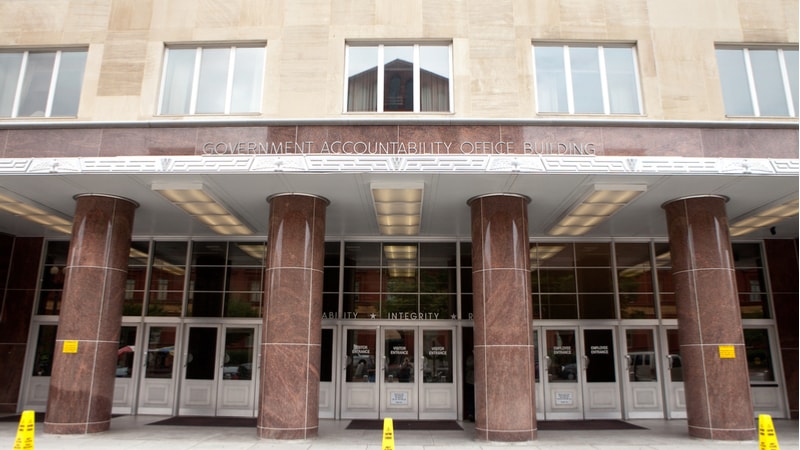
The Government Accountability Office (GAO) said in a report issued today that most of the largest Federal agencies made good progress in meeting goals to close data centers in Fiscal Year 2019, but also recommended that the Office of Management and Budget (OMB) take several steps to improve clarity of reporting on data center closures under OMB’s Data Center Optimization Initiative (DCOI) issued in 2016 and modified last year.
The Agency View
According to GAO, 23 of the 24 CFO Act agencies reported as of August 2019 that they had met, or planned to meet, FY2019 data center closure goals. Those efforts would include closing around 286 facilities, and generating cost savings of about $241 million. Cost savings from DCOI-related closings since 2012 total about $4.7 billion, GAO said.
According to GAO, the CFO Act agencies also reported plans to generate $264 million of savings from DCOI efforts in FY2020.
After accounting for data centers both closed and planned for closure, as of Aug. 31, 2019, the agencies had 2,441 data centers continuing in operation, GAO said.
GAO said the 24 agencies reported progress against OMB’s three revised data center optimization metrics for virtualization, advanced energy monitoring, and server utilization, and found that: eight agencies met targets for all three categories, five agencies met targets for two of the categories, and six agencies met targets for one of the categories. For a fourth target – availability – GAO said the data “were not sufficiently reliable to report on because of unexpected variances in the information reported by the agencies.”
GAO said that while the three revised metrics’ definitions included the key characteristics of being clearly defined and objective, none “included statistical universe parameters that enable determinations of progress.”
“Specifically, these metrics call for counts of the actual numbers of (1) virtualized servers, (2) data centers with advanced energy metering, and (3) underutilized servers; but the metrics did not include a count of the universe of all servers and all data centers. Accordingly, percentages cannot be calculated to determine progress–for example, the number of virtualized servers may increase, but if the universe of servers increases at a higher rate, then progress would actually be negative,” GAO said.
As part of its review, GAO made the following recommendations to individual agencies:
- The departments of Agriculture and Commerce, and the National Aeronautics and Space Administration (NASA) should take action to achieve data center-related cost savings under DCOI; and
- Commerce should take action to meet data center optimization metric targets under DCOI.
Each of the agencies agreed with the recommendations, GAO said.
Recommendations for OMB
GAO also gave several recommendations to OMB, for which it said the agency has neither agreed nor disagreed:
- Require “that agencies explicitly document annual data center closure goals in their DCOI strategic plans and track those goals on the IT Dashboard”;
- Require “agencies to report in their quarterly inventory submissions those facilities previously reported as data centers, even if those facilities are not subject to the closure and optimization requirements of DCOI”;
- Document OMB decisions on “whether to approve individual data centers when designated by agencies as either a mission critical facility or as a facility not subject to DCOI”; and
- Take “action to address the key performance measurement characteristics missing from the DCOI optimization metrics, as identified in this report.”
An OMB spokesperson did not respond to a MeriTalk request today for comment on the recommendations.
